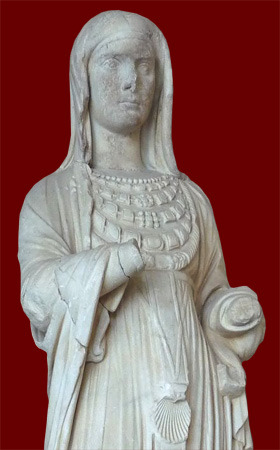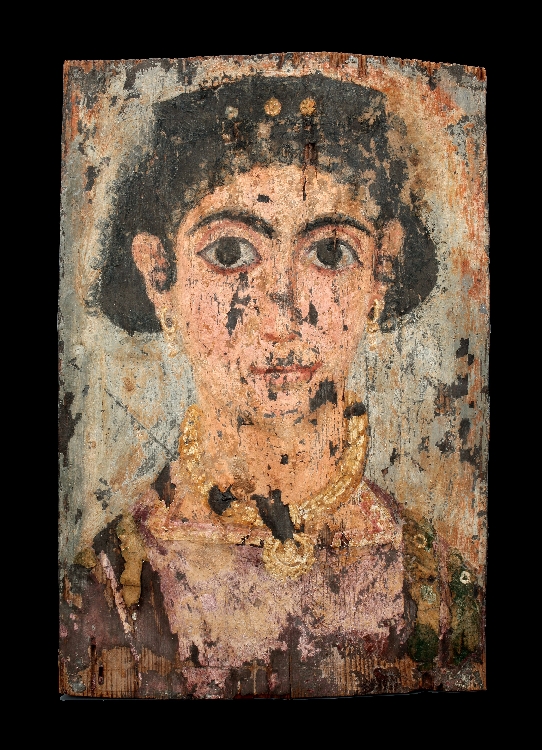Found in Vulci, white marble; 1st century BCE (ca 60 BCE).
“antique fastening holes for metal jewelry on the back of the head and on the left earlobe; on the horizontally worked underside a somewhat deepened central field with anathyrosis about 3 cm wide and encircling on three sides”
Arachne database no. 27244


“Torlonia-Mädchen”, Reconstruction. Rome, Mus. Torlonia source The University of Göttingen, Germany

„The portrait of a girl in Rome, Torlonia Collection, is a well-known example from the early phase of Roman portraits of women with a fashion hairstyle. The briefly modeled, sharply cut facial features are characteristic of the style of this time. The portrait in the Torlonia collection is part of a series of portraits that come partly from Italy and partly from Greece. Most of them are very young girls; all have intricate hairstyles that were originally decorated with metal appliqués. In some examples, the jewelry is also made or painted in marble, so that the shapes are recognizable and allow the reconstruction of the incompletely preserved pieces. The Torlonia girl’s fine hair lies close to the skull between the braided strands at the temples and crown and is tied at the back of the head to form a knot. The smoothed surfaces are particularly striking. They are contact surfaces for metal jewelry. Accordingly, the head wore elongated jewelry sheets on the temples, a jewelry ribbon on the top of the head and a round jewelry disc on the topknot. The widespread distribution of these early female individual portraits shows that their introduction cannot be attributed to either Eastern Greek or Western Roman art, but took place simultaneously in different locations. This observation is confirmed by the preserved nameable portraits of women from the era.”
“This particular portrait mode shows stylistic characteristics
reminiscent of those featured on Ptolemaic coins showing portraits of Berenike II
(II.S1.5-6) issued after her death. Interestingly, the Torlonia maiden is likely a
funerary portrait as well, depicting a woman in the prime of her youth.”
pp. 104-105 https://era.library.ualberta.ca














